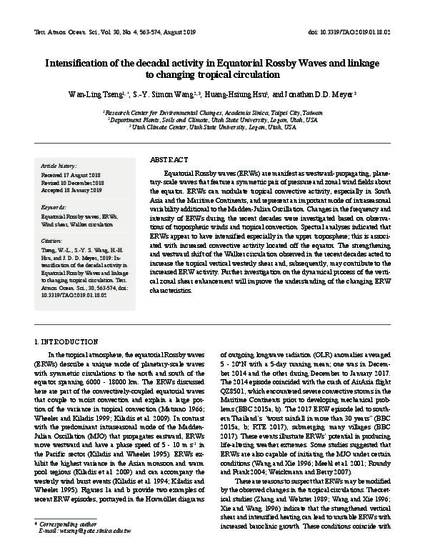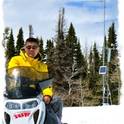
Equatorial Rossby waves (ERWs) are manifest as westward-propagating, planetary-scale waves that feature a symmetric pair of pressure and zonal wind fields about the equator. ERWs can modulate tropical convective activity, especially in South Asia and the Maritime Continents, and represent an important mode of intraseasonal variability additional to the Madden-Julian Oscillation. Changes in the frequency and intensity of ERWs during the recent decades were investigated based on observations of tropospheric winds and tropical convection. Spectral analyses indicated that ERWs appear to have intensified especially in the upper troposphere; this is associated with increased convective activity located off the equator. The strengthening and westward shift of the Walker circulation observed in the recent decades acted to increase the tropical vertical westerly shear and, subsequently, may contribute to the increased ERW activity. Further investigation on the dynamical process of the vertical zonal shear enhancement will improve the understanding of the changing ERW characteristics.
